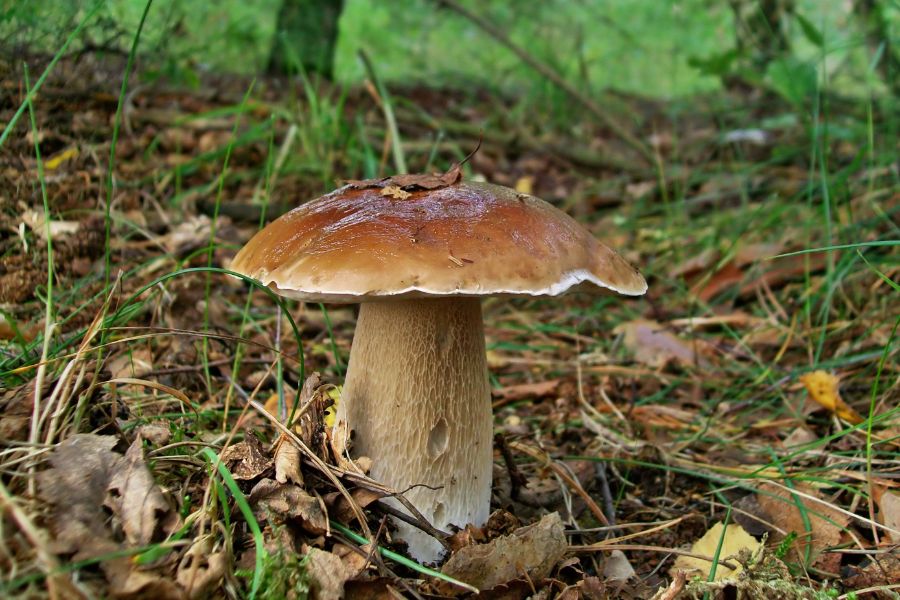Porcini mushroom hunters in Texas know that timing and terrain are everything. These wild mushrooms are valued for their robust flavor that enhances everything from sauces to meat dishes with a savory depth hard to replicate.
Their dense, almost silky texture holds up beautifully in stews and pasta, making them a favorite among chefs and home cooks alike. Even after drying, they retain their essence and can be rehydrated to create richly flavored broths that elevate simple meals.
A small bag of top-grade dried porcini can cost more than most cuts of premium meat. When fresh, they can command high prices, especially in regions where availability is unpredictable or the season is short.
Texas may not be the first place people think to search for these mushrooms, but they do grow here—and in more places than you might expect. With the right knowledge, you can walk out of the woods with a mix of wild mushrooms worth far more than their weight in dollars.
What We Cover In This Article:
- What different types of Porcini mushrooms look like
- The mushrooms that look like Porcini you should avoid
- Our best tips for finding Porcini mushrooms
- The top places in the state to find porcini
- The best times of year to look for them
- The extensive local experience and understanding of our team
- Input from multiple local foragers and foraging groups
- The accessibility of the various locations
- Safety and potential hazards when collecting
- Private and public locations
- A desire to include locations for both experienced foragers and those who are just starting out
Using these weights we think we’ve put together the best list out there for just about any forager to be successful!
A Quick Reminder
Before we get into the specifics about where and how to find these plants and mushrooms, we want to be clear that before ingesting any wild plant or mushroom, it should be identified with 100% certainty as edible by someone qualified and experienced in mushroom and plant identification, such as a professional mycologist or an expert forager. Misidentification can lead to serious illness or death.
All plants and mushrooms have the potential to cause severe adverse reactions in certain individuals, even death. If you are consuming wild foragables, it is crucial to cook them thoroughly and properly and only eat a small portion to test for personal tolerance. Some people may have allergies or sensitivities to specific mushrooms and plants, even if they are considered safe for others.
The information provided in this article is for general informational and educational purposes only. Foraging involves inherent risks.
What Porcini Mushrooms Look Like
Porcini technically refers to one mushroom species: Boletus edulis, also known as the king bolete. But in many parts of the U.S., several other edible mushrooms in the same genus or family are also called porcini. These close relatives belong to the broader Boletus group and share a similar look, taste, and texture:
Porcini (Boletus edulis)

Porcini, also known as king bolete, cèpe, or penny bun, is a large, thick-stemmed mushroom with a smooth brown cap and a sponge-like underside instead of gills. Its firm white flesh has a nutty, earthy flavor that holds up well in cooking and drying. This species is the classic or “true” porcini.
It’s most commonly found in the Pacific Northwest, especially in coastal forests of Oregon, Washington, and Northern California. It grows in coniferous woods, often near spruce, fir, or pine, and usually appear in the fall after consistent rainfall.
California King Bolete (Boletus edulis var. grandedulis)
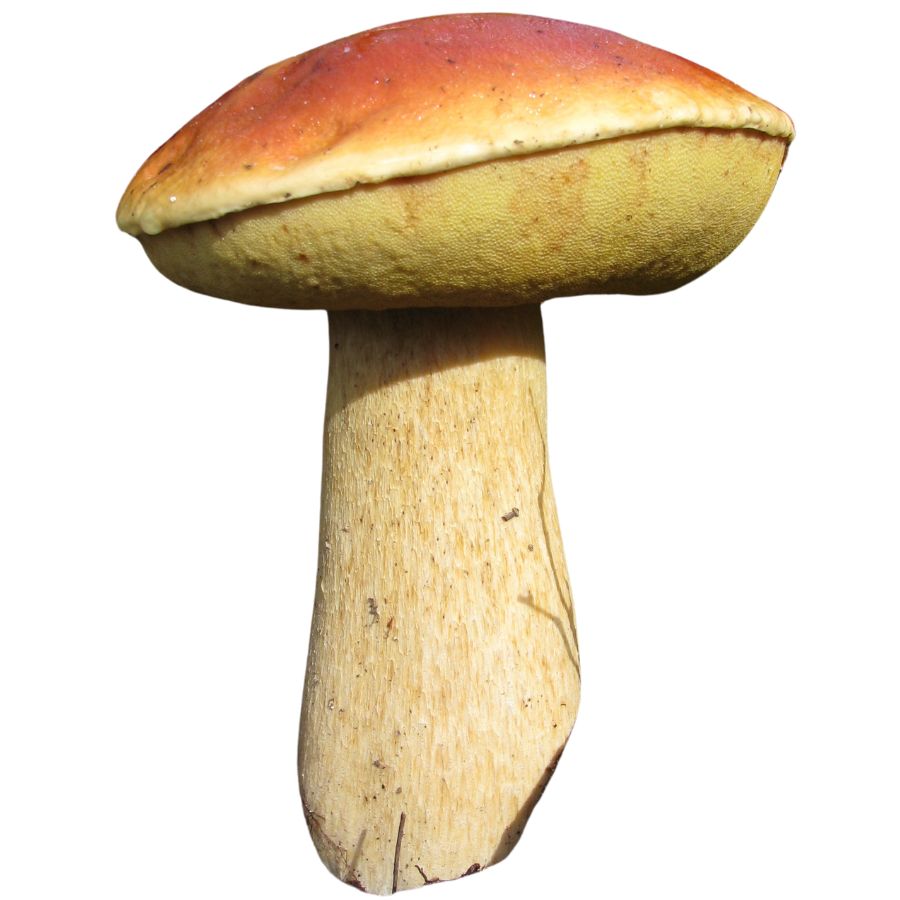
The California king bolete, sometimes called the Sierra porcini or just king bolete, is a large, stocky mushroom with a smooth brown cap and a thick white stem. It has a firm texture and a deep, nutty flavor that holds up well in cooking.
This porcini variety grows in the Sierra Nevada and coastal forests of California, especially from fall through early winter. It prefers mixed woodlands with fir, pine, or tanoak and often appears after the first heavy rains of the season.
Spring King Bolete (Boletus rex-veris)
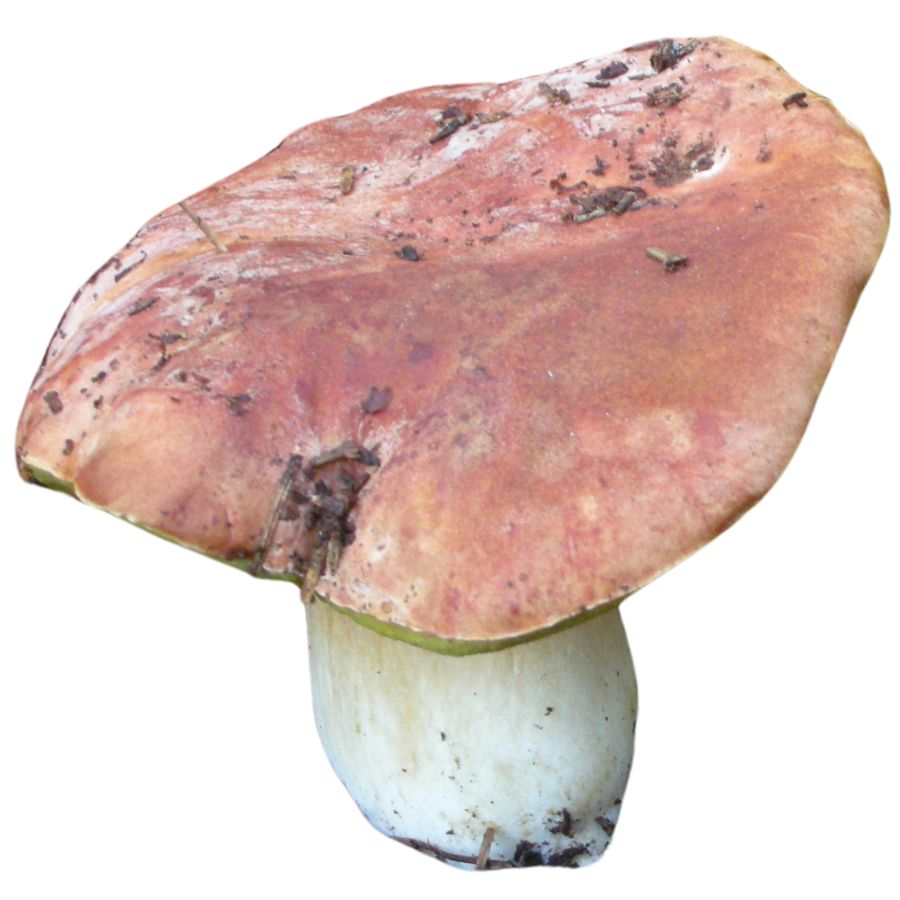
The spring king bolete, often called the spring porcini, has a pale brown cap, a stout white stem, and a firm texture that stays intact during cooking. Its flavor is rich and earthy, with a slightly sweet finish that sets it apart from other boletes.
You’ll find this mushroom in the western mountains of the United States, especially in California, Oregon, and parts of the Rocky Mountains. It appears in high-elevation conifer forests in late spring and early summer, usually near snowmelt.
White King Bolete (Boletus barrowsii)
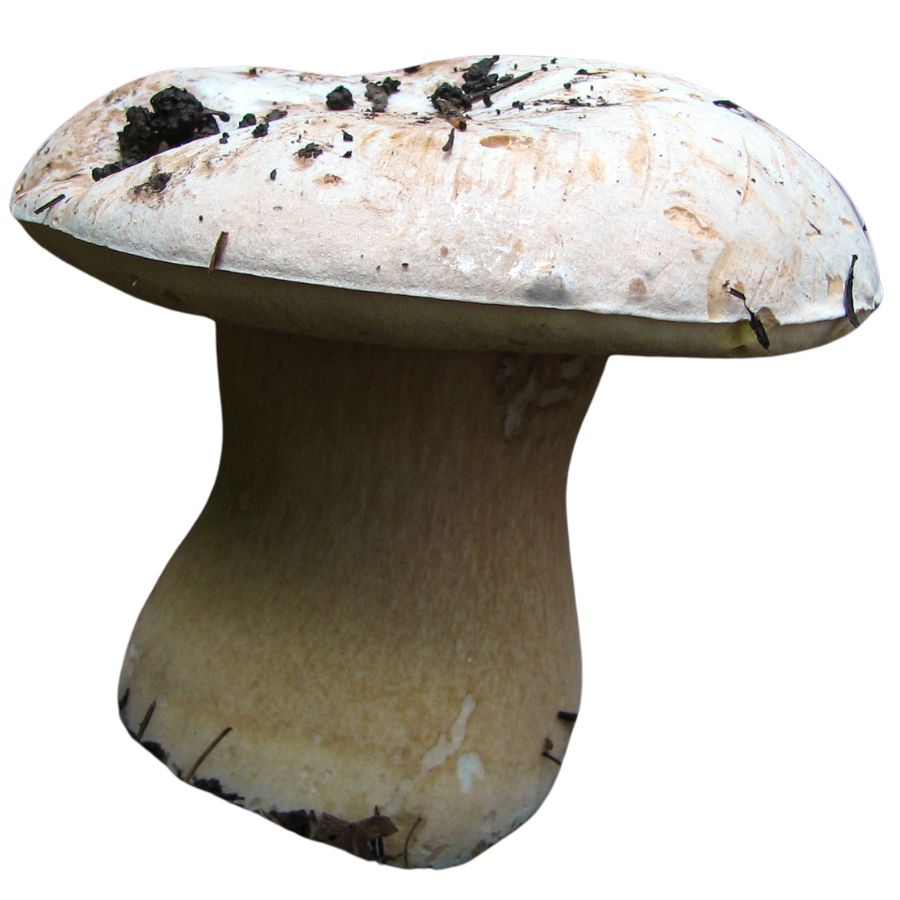
The white king bolete, sometimes called Barrows’ bolete or desert porcini, is a pale, chunky mushroom with a white to ivory cap and a thick stem. It has a smooth, mild flavor that deepens when cooked and is especially prized when young and firm.
It grows in the southwestern United States, especially in Arizona and New Mexico, and is often found in ponderosa pine forests. Unlike other porcini, it tends to fruit during the summer monsoon season after warm rains.
Almost Bluing King Bolete (Boletus subcaerulescens)
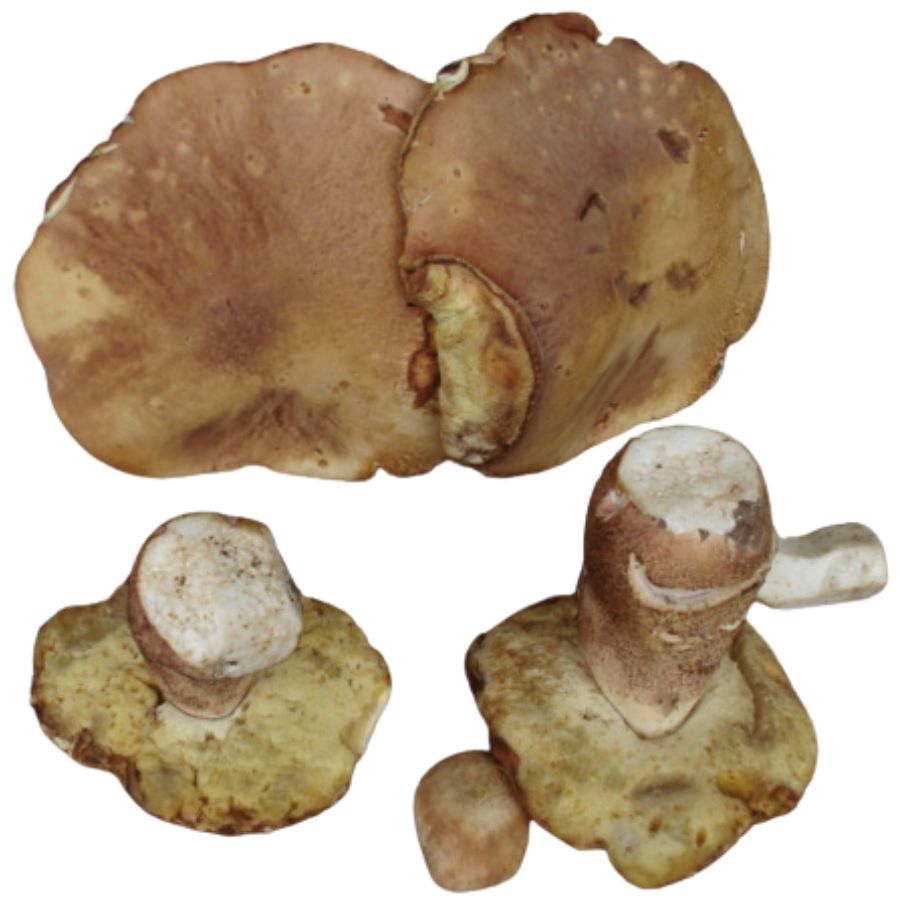
The almost bluing king bolete, also known as the blue-staining porcini, has a light brown cap and a stout stem covered in a fine network of raised lines. It gets its name from the faint blue tint that sometimes shows near the base when cut, though the color change is subtle and doesn’t always appear.
This porcini is edible and well-regarded for its firm texture and mild, nutty flavor. It cooks up nicely in sautés or soups and holds its shape without turning mushy.
It grows around the Great Lakes and into the Northeast, favoring mixed forests with spruce, fir, or pine and usually shows up in late summer after steady rain.
Fib King (Boletus fibrillosus)
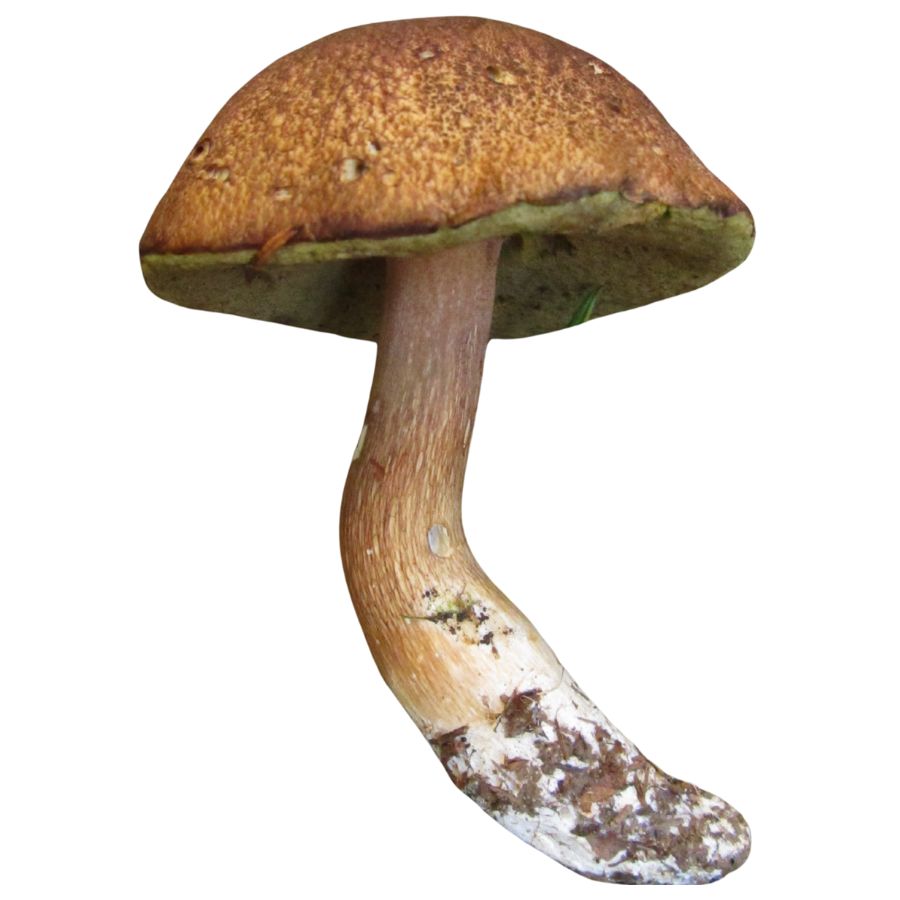
The fib king, sometimes called the fuzzy porcini, has a dark reddish-brown cap with a matte, finely fibrous surface and a thick pale stem. Its dense flesh has a mild, pleasant flavor that deepens when cooked, making it a solid addition to savory dishes.
You can find this mushroom is found in the Pacific Northwest, especially in the coastal forests of Oregon and Washington. It prefers old-growth conifer forests and usually fruits in the fall after sustained rain.
Mushrooms That Look Like Porcini But Aren’t
In this state, a handful of mushrooms resemble porcini at first glance. Knowing the differences can help you avoid a bad meal or worse:
Satan’s Bolete (Boletus satanas)
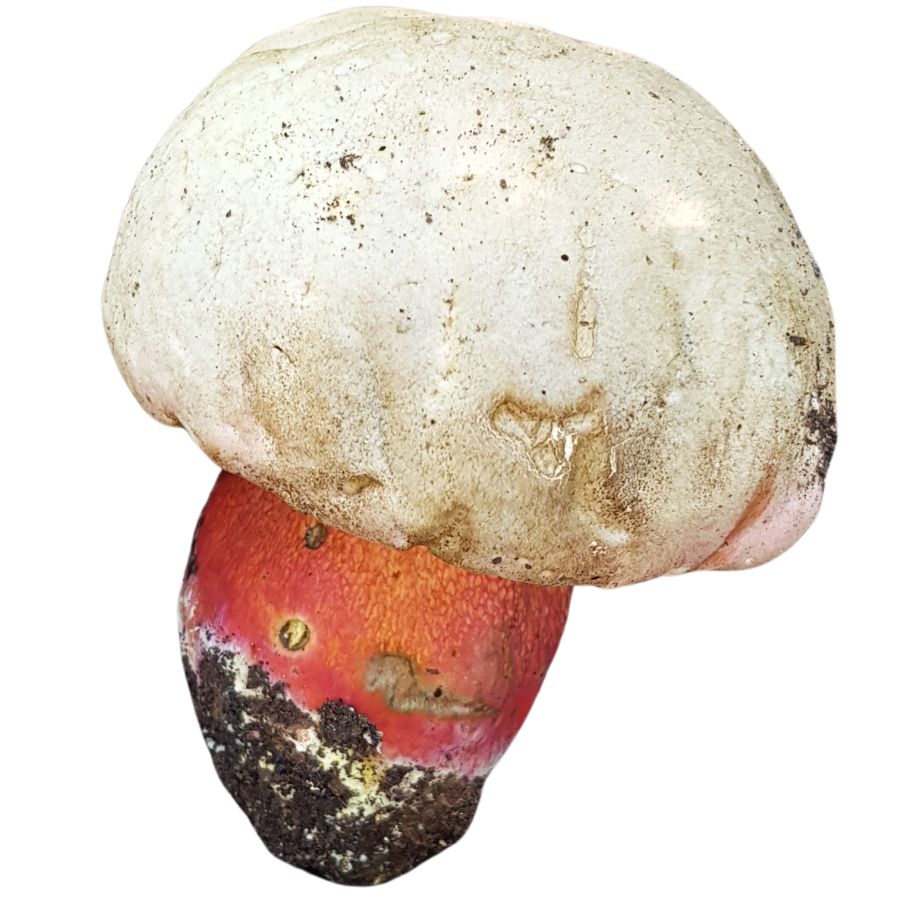
Satan’s bolete is a large, thick mushroom with a pale, almost white cap and a bright red stem. The pores underneath are yellow but bruise blue when handled, making it stand out from other boletes in the woods.
It grows in warmer parts of the southeastern U.S., especially in hardwood forests with oak or beech. This mushroom is toxic and should never be eaten as it can cause severe gastrointestinal distress including vomiting and diarrhea.
Sensitive Bolete (Boletus sensibilis)
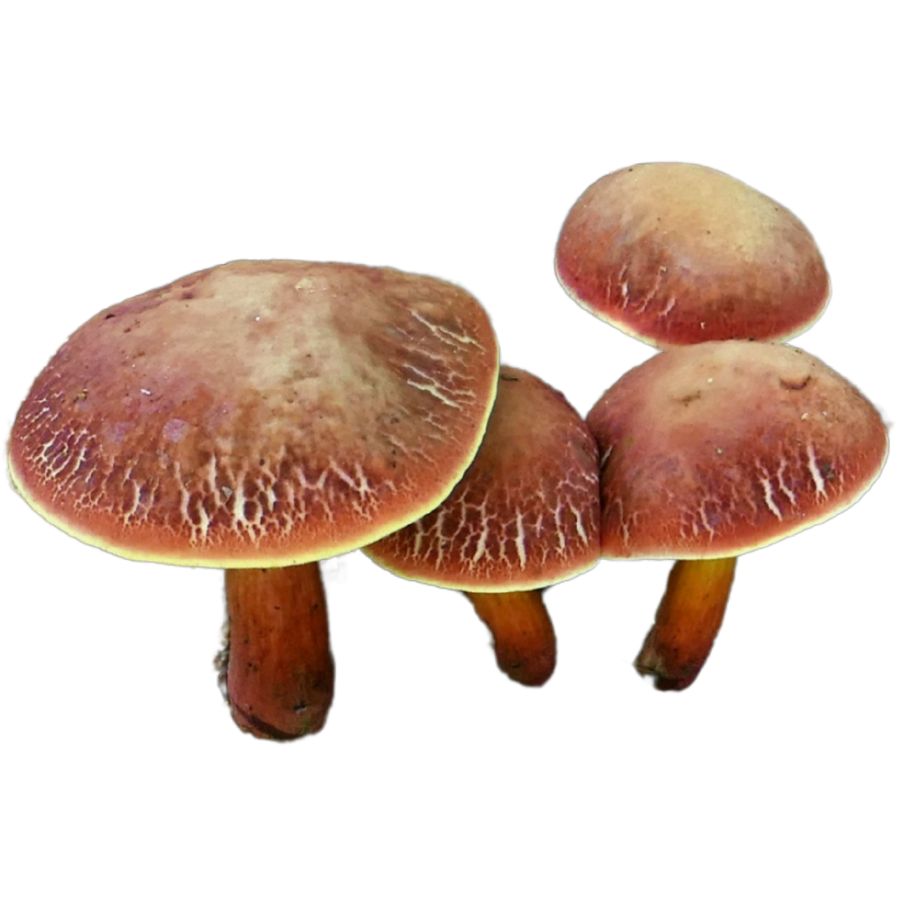
Sensitive bolete, sometimes called the “bruise bolete,” is known for how quickly it turns blue when touched or cut. It has a smooth yellow cap, red or pinkish pores, and a yellow stem that often shows bruising almost instantly.
You can find it across the eastern and southeastern U.S., especially in mixed hardwood forests during summer. While it might look appealing, this mushroom is considered toxic and can cause stomach cramps, nausea, and vomiting if eaten. Even small amounts may lead to unpleasant symptoms, so it’s best left alone.
Huron Bolete (Boletus huronensis)
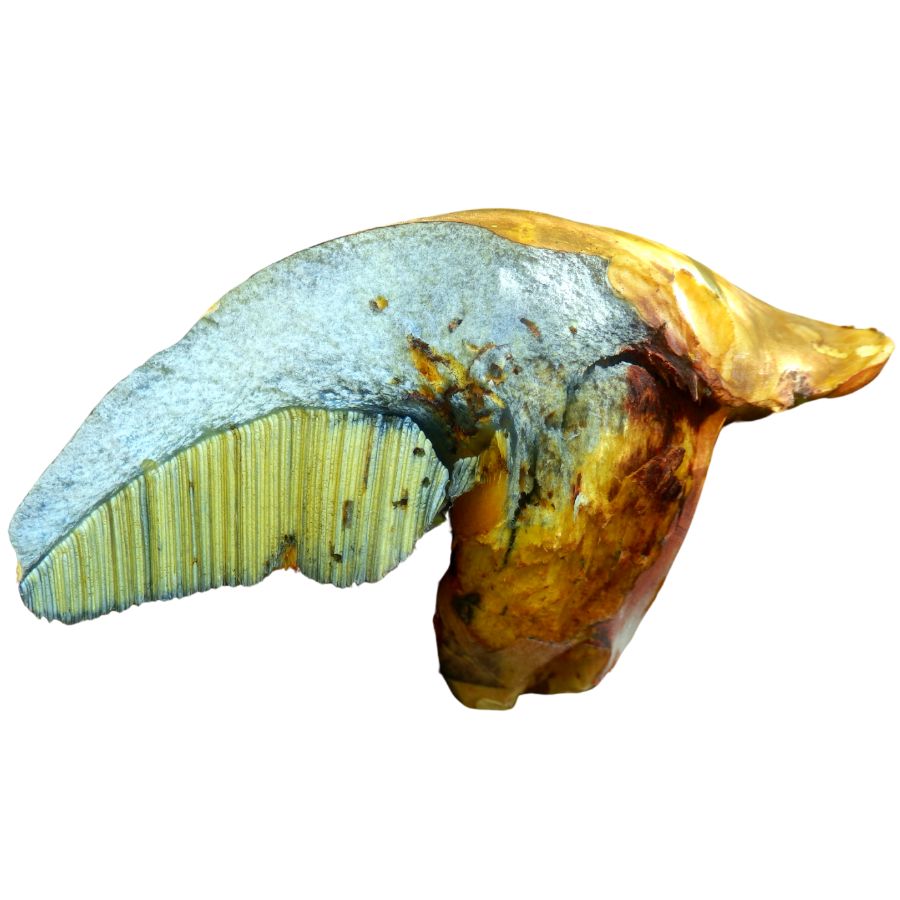
Huron bolete is a chunky mushroom with a dull brown cap, yellow pores, and a thick, slightly reddish stem that bruises blue when handled. It may not look as bold as other toxic boletes, but it’s still one to avoid.
Sometimes called the “Great Lakes bolete,” this species is found in the Great Lakes region, especially in Michigan and nearby states, growing under hardwoods like oak and beech. It’s considered poisonous and can cause intense nausea, cramps, and vomiting. While not deadly, the symptoms can be severe enough to require medical attention.
Bitter Bolete (Tylopilus felleus)
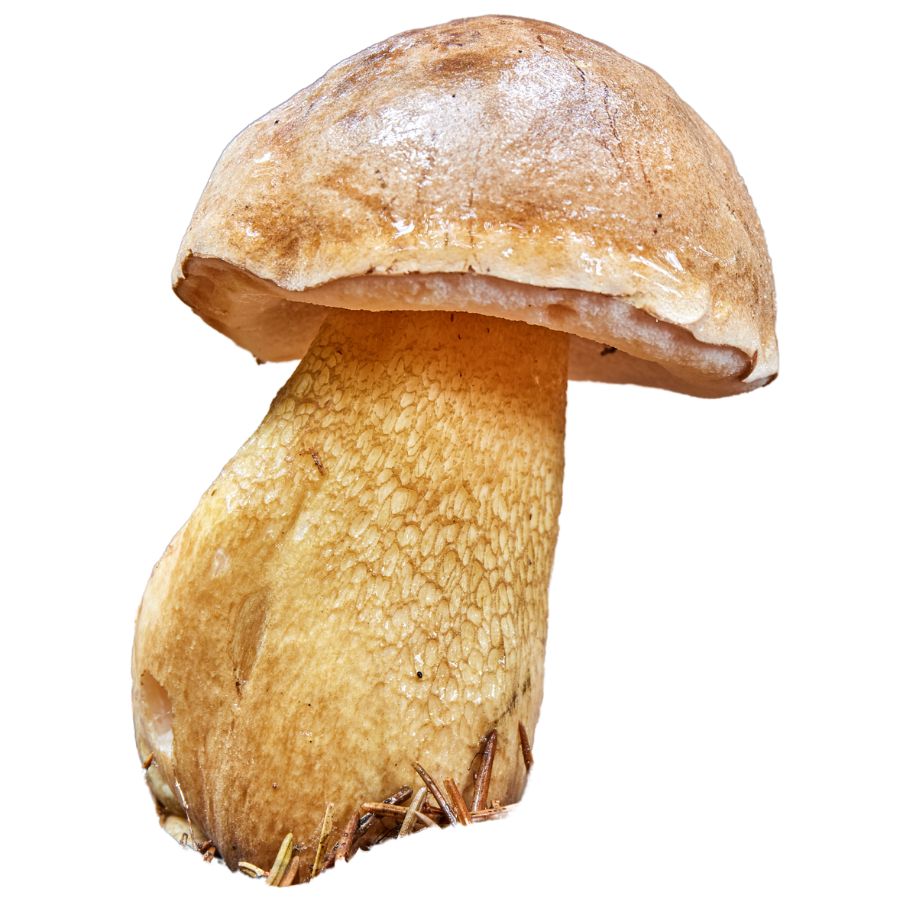
Bitter bolete, also called the “bitter tasting bolete,” looks a lot like an edible porcini at first glance. It has a brown cap, pinkish pores, and a thick, netted stem that can fool even experienced foragers.
This mushroom grows widely across the country, especially in eastern forests with oak or pine. It isn’t toxic, but the taste is so bitter that even a small piece can ruin a whole dish. Most people spit it out right away, but if swallowed, it can still lead to mild stomach upset.
Two-colored Bolete (Baorangia bicolor)
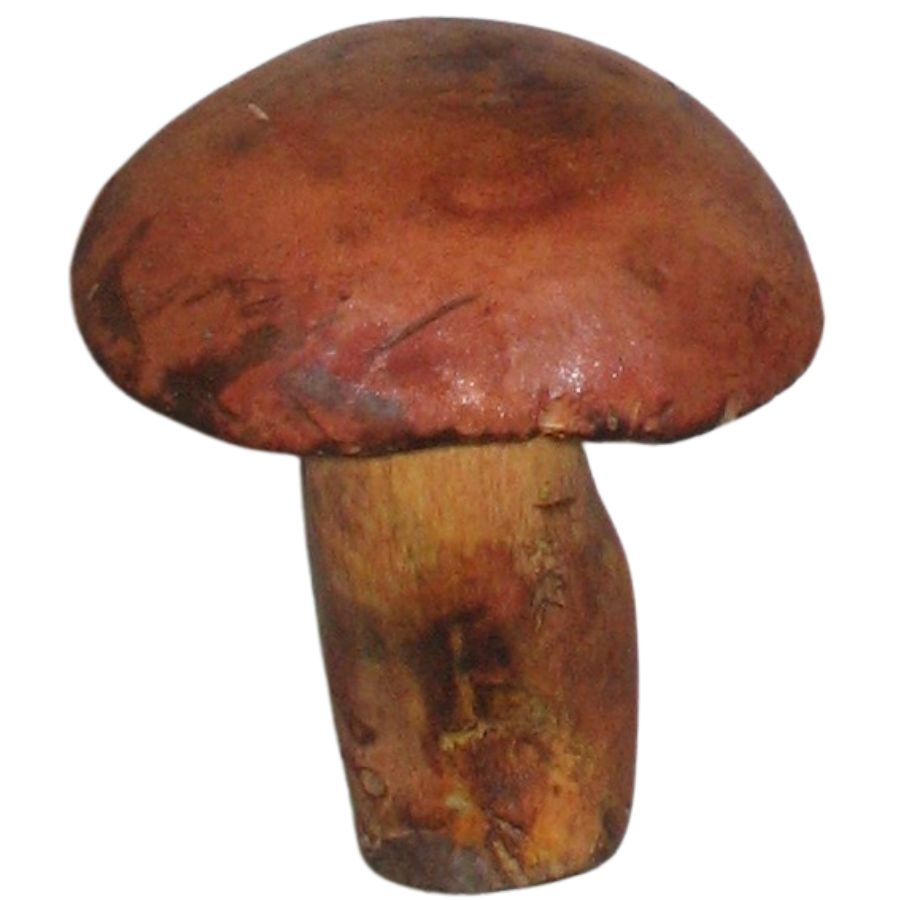
Two-colored bolete, sometimes called the “bicolor bolete,” has a bright yellow stem and cap with deep red tones near the base and edge. The pores are yellow and stain blue when touched, giving it a bold and colorful look.
It’s found across the eastern U.S., especially in oak and mixed hardwood forests during summer and fall. This species is edible and often enjoyed for its mild flavor and tender texture when cooked. Some people report digestive discomfort, so it’s best to test small amounts first.
How to Find Porcini Mushrooms
Porcini mushrooms don’t show up just anywhere. They grow in very specific places, and understanding the right mix of trees, soil, and seasonal conditions is the key to finding them.
Focus on Mixed Forests with Both Hardwoods and Conifers
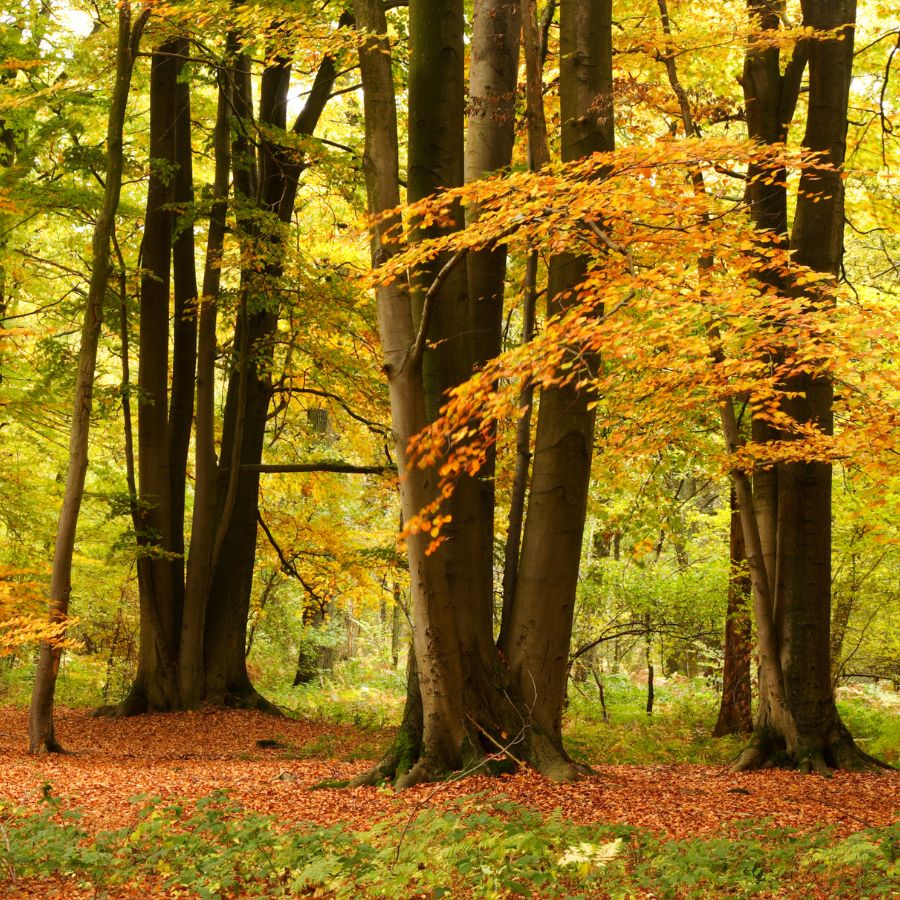
Mixed hardwood and conifer forests are common habitats for porcini mushrooms. In the Northeast, mature oak-maple forests with scattered hemlocks are good spots. In the Rockies and the Pacific Northwest, they thrive in higher-elevation forests dominated by spruce and fir.
Old-growth or long-established forests are usually more productive than young stands.
Wait Several Days After a Steady Rainfall
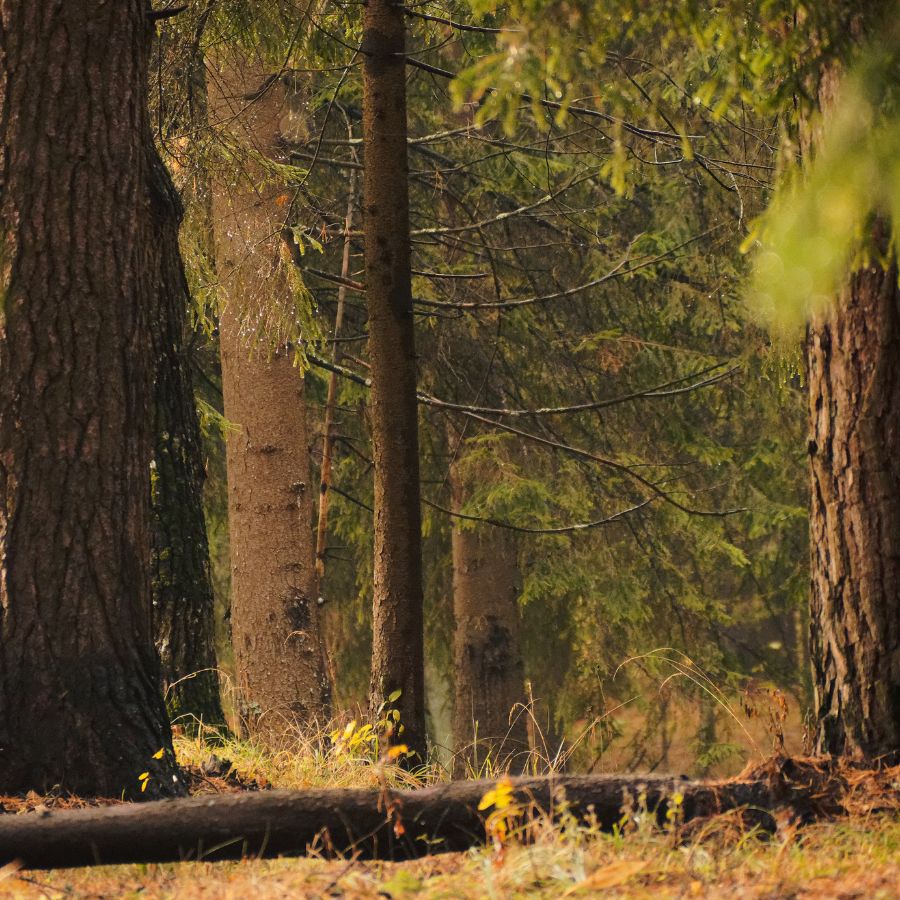
Consistent moisture is key. These mushrooms tend to appear several days after steady rain, especially if followed by warm temperatures.
They rarely grow during droughts or in overly wet, swampy areas. A moist but not soggy forest floor is ideal.
Search in Loose, Acidic Soil with Plenty of Leaf Litter
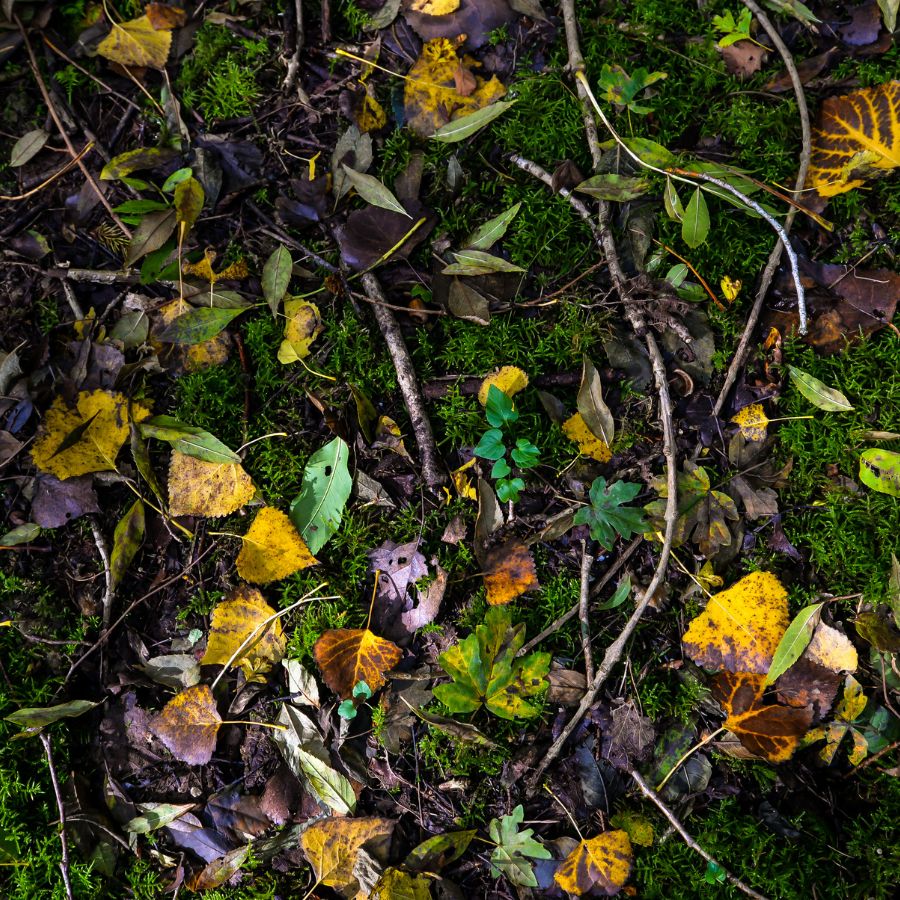
Porcini and their close relatives grow best in well-drained soils that are slightly acidic. Sandy loam or loose forest soil rich in organic material tends to support healthy mushroom growth.
They are rarely found in compacted or heavily clay-based ground. Look for them where the topsoil is crumbly and full of leaf litter.
Check Near Animal Paths, Broken Branches, and Debris Piles
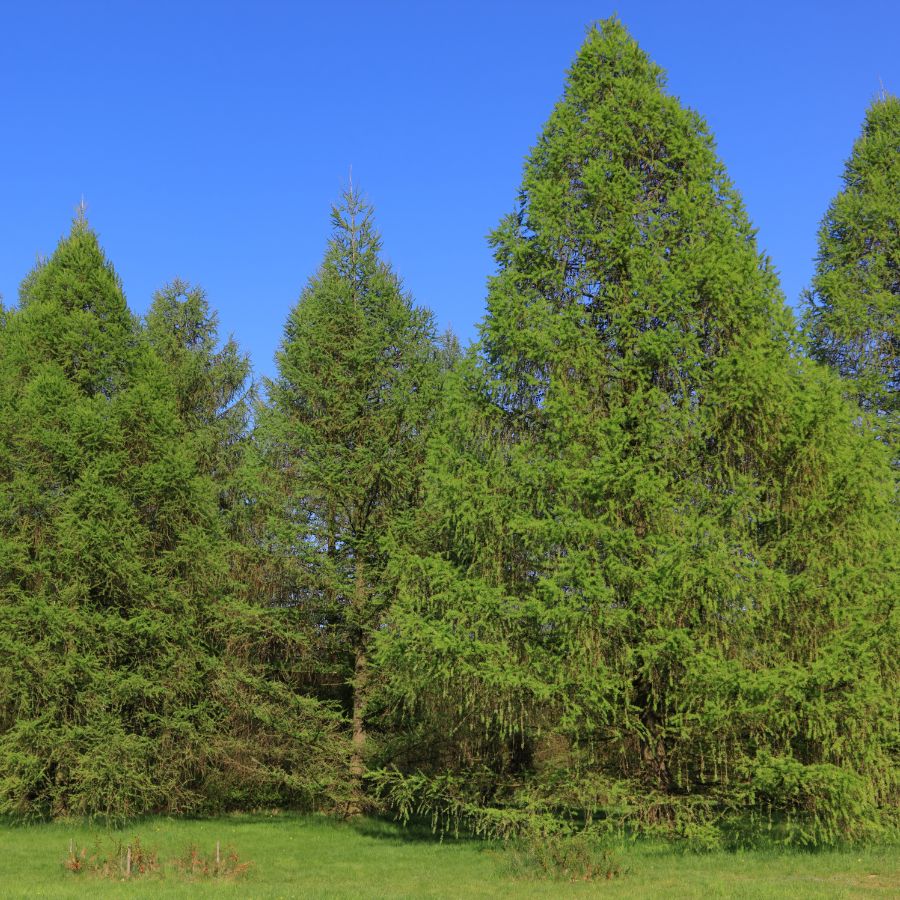
Porcini and edible boletes often grow near the edges of clearings, trails, or small breaks in the canopy. These spots get dappled light, which helps warm the soil while keeping it moist.
Look along well-used animal paths or areas with broken branches and scattered debris. These partial openings tend to support just the right conditions for a flush.
Follow Animal Dig Marks and Shifts in the Forest Floor
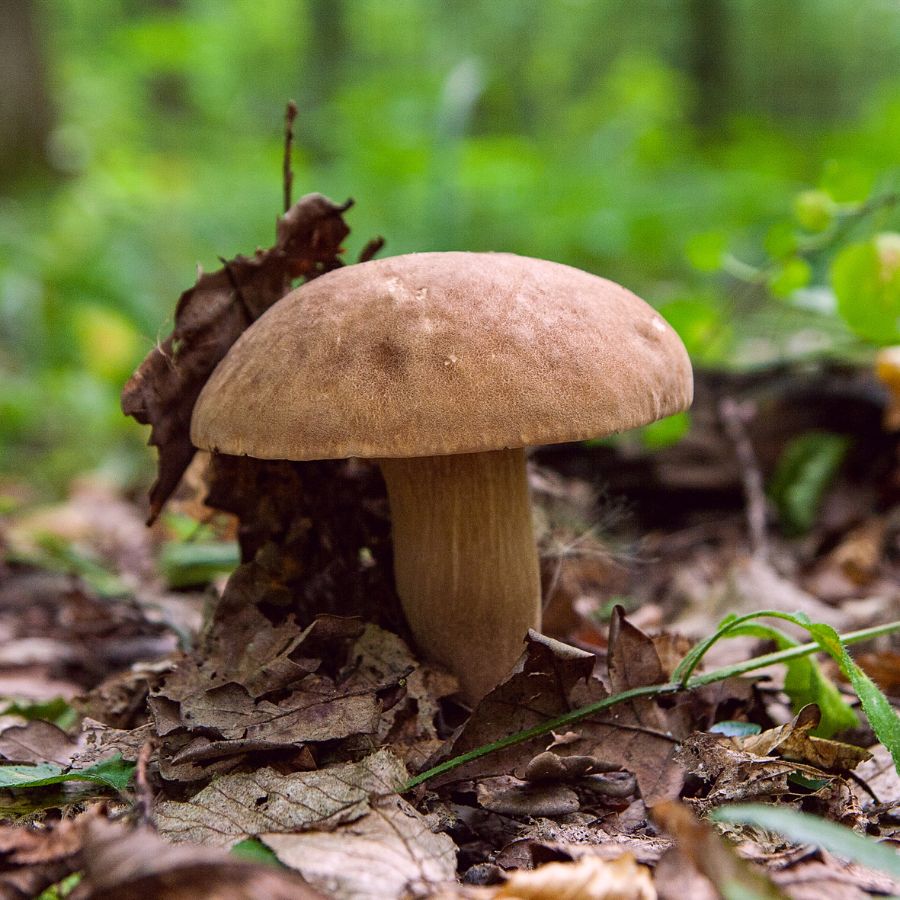
On the forest floor, mossy patches are good indicators for mushrooms. Porcini may push up under duff, creating small mounds or cracks in the soil. Displaced needles, uneven ground, or fresh animal dig marks can sometimes point to hidden mushrooms nearby.
Pay attention to slight changes in texture or elevation underfoot.
Focus on North-Facing Mountain Slopes
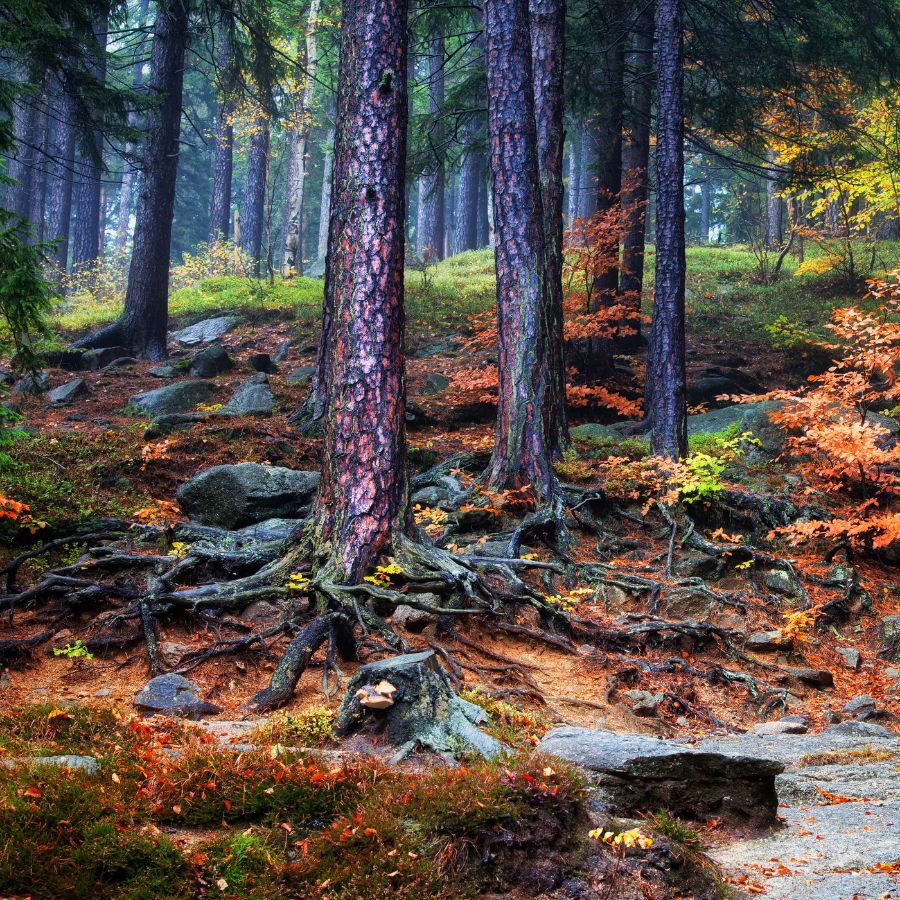
In mountain regions, porcini and edible boletes tend to appear between 5,000 and 9,000 feet. They favor gentle slopes with good water runoff but not erosion.
South-facing slopes may dry too quickly, while north-facing ones hold moisture longer. Sloped terrain with a soft duff layer is often productive after summer rains.
Before you head out
Before embarking on any foraging activities, it is essential to understand and follow local laws and guidelines. Always confirm that you have permission to access any land and obtain permission from landowners if you are foraging on private property. Trespassing or foraging without permission is illegal and disrespectful.
For public lands, familiarize yourself with the foraging regulations, as some areas may restrict or prohibit the collection of mushrooms or other wild foods. These regulations and laws are frequently changing so always verify them before heading out to hunt. What we have listed below may be out of date and inaccurate as a result.
Where You Can Find Porcini
Porcini mushrooms tend to grow in specific forests across the state, often tied to elevation, soil type, and tree cover. Knowing where to look can make all the difference in finding them during their short fruiting season.
Sam Houston National Forest
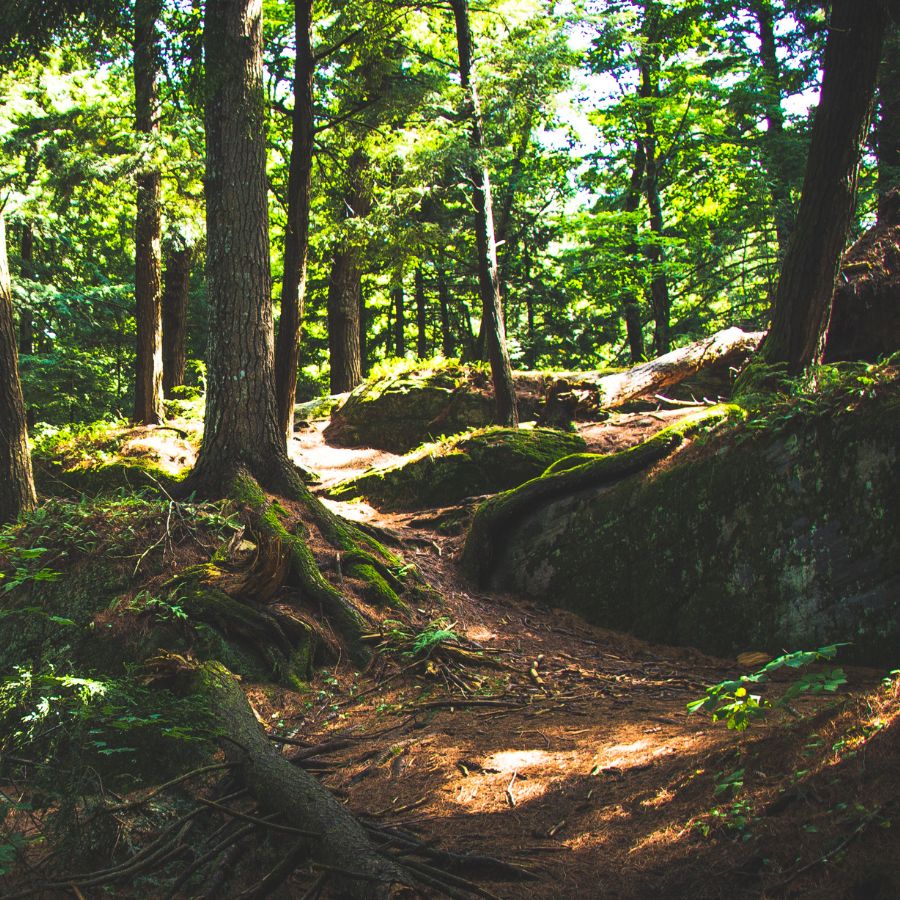
Sam Houston National Forest stretches across a patchwork of piney woods and creeks just north of Houston, intersected by the Lone Star Hiking Trail. The mix of sandy loam and clay soils, along with the steady moisture in some areas, creates just the kind of environment that can support porcini mushrooms.
One of the more promising areas is around Lake Conroe, particularly near the western shoreline where hardwoods blend into mixed pine forest. You’ll find pockets of leaf litter and well-drained soil here—ideal conditions that have been known to produce a variety of edible boletes, including porcini.
The Big Creek Scenic Area also offers suitable terrain, especially along the shaded ridgelines and slopes where rainfall tends to linger. This spot is dominated by mature hardwoods mixed with loblolly pine, and the ground cover stays damp enough to support summer and fall mushroom growth.
Further east, the Double Lake Recreation Area has dense canopy cover around its outer loop trails, with hickories and oaks that contribute the right kind of leaf debris. In these wooded sections just beyond the developed areas, the forest floor often produces the right conditions for porcini to emerge during favorable weather.
Davy Crockett National Forest

Davy Crockett National Forest stretches across nearly 160,000 acres of East Texas pine-hardwood woodland and includes part of the Neches River. That mix of elevation, soil variation, and tree diversity creates a patchwork of microhabitats where porcini mushrooms have room to thrive.
Neches Bluff Overlook may not look like mushroom country at first glance, but the shady ridges and slopes around it support dense oak and pine cover that can support porcini growth during wetter months.
Ratcliff Lake Recreation Area draws most visitors to the shoreline, but the forested sections of the 20-mile-long Four C National Recreation Trail are worth paying closer attention to. The trail passes through sections with mature hardwoods, including areas around Piney Creek.
Kennard Horse Trail winds through lesser-traveled stretches near Big Slough Wilderness. Porcini are especially likely in the shaded pockets between drainage creeks that don’t show up on maps, particularly where pine gives way to oak on the edges of the lowland flats.
Angelina National Forest
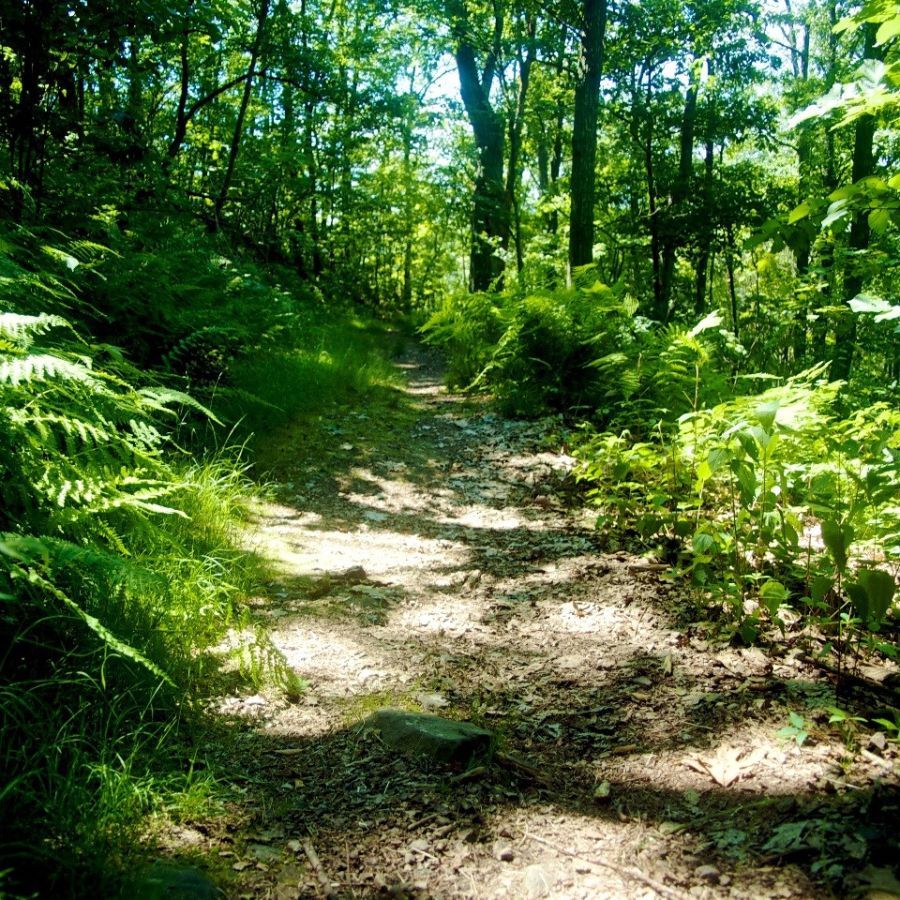
Angelina National Forest is home to a portion of the Neches River, where bottomland hardwoods stretch out into quiet, seasonally flooded flats. Along with its towering pines, this blend of wet and dry ecosystems makes the area unusually diverse for East Texas.
On the north side of the forest, the Sawmill Hiking Trail follows a shaded path through hardwoods along Bouton Lake. Nearby, the edges of Bouton Lake itself—particularly where old stumps and leaf duff accumulate—offer similar potential.
To the west, the Boykin Springs Recreation Area includes a patchwork of creeks, ridges, and mature mixed forest. The hills above Boykin Creek stay relatively cool and undisturbed, with red oaks and pines interspersed across the slopes.
Trails branching off from Boykin Springs Lake loop through slightly elevated terrain where the leaf litter is thick and undisturbed.
Further south, areas around Sandy Creek, especially near the spillway of the Sam Rayburn Reservoir, offer shaded forest cover that doesn’t flood easily. The ridgelines that lead away from the reservoir tend to hold clusters of pine and hardwood together, which is great for porcini growth.
Sabine National Forest

Sabine National Forest hugs the western shoreline of Toledo Bend Reservoir, one of the largest manmade lakes in the South. Within this diverse patchwork of pine and hardwood forest, there are several spots where porcini mushrooms are likely to grow if conditions line up right.
Along the Trail Between the Lakes, especially the sections near Indian Mounds Wilderness, the mix of mature pine and scattered oak creates the kind of shaded, humus-rich terrain porcini favor.
The trail winds through moist ravines and low ridges where leaf litter accumulates, giving you plenty of ground to scan after summer rains.
Up north near Mill Creek, the forest canopy thickens and the undergrowth thins out—two good signs when you’re hoping for porcini. The soil here stays relatively damp under the trees, and you’ll often find patches of moss and duff where the mushrooms are more likely to emerge.
On the southern end of the forest near Ragtown Recreation Area, the terrain flattens into a patchy pine-oak mix dotted with seasonal creeks. These shallow drainages and the gently sloping woods around them have all the elements porcini need to thrive.
Big Thicket National Preserve
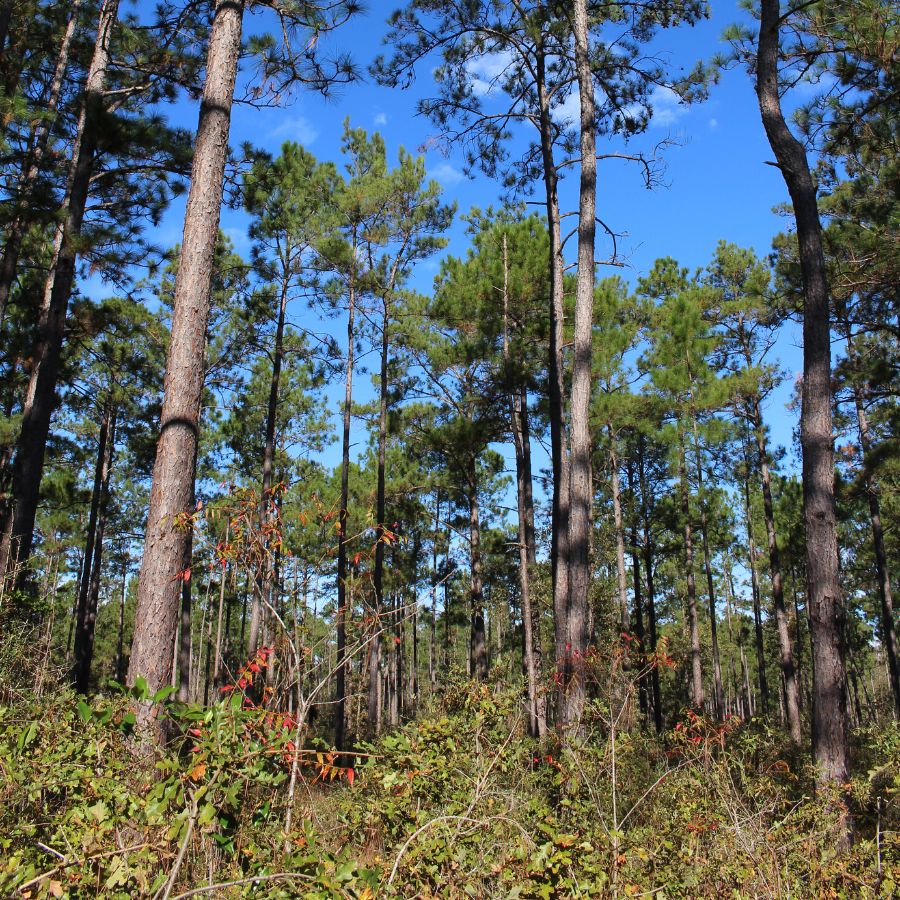
Big Thicket National Preserve is home to an unusual mix of ecosystems that include everything from cypress swamps to longleaf pine uplands. With such an overlap of forest types, it also supports a wide range of fungi—especially in the zones where hardwoods meet sandy soils.
Porcini mushrooms are most likely to appear in areas with deep leaf litter beneath mature trees, and Big Sandy Creek Unit has several sections that fit that profile. The hardwood-rich corridors along Big Sandy Creek itself offer just the kind of shaded, undisturbed ground porcini favor after sustained rains.
Further south, the Turkey Creek Unit contains a mix of beech, oak, and loblolly pine stands that keep the soil cool and damp through early summer.
Some of the less-trafficked side trails, like those branching off of the Turkey Creek Trail near Woodlands Cemetery, pass through low ridges and slopes where porcini conditions are likely to develop.
In the Hickory Creek Savannah Unit, the deeper wooded pockets west of Menard Creek offer a contrast to the open pine savannas the area is known for. These hardwood groves create the right microclimate for porcini to thrive during warm, wet stretches in late spring and early fall.
Additional Locations to Find Porcini
There are several reliable locations across the state where porcini mushrooms grow:
| Central Texas | Porcini Collection Details |
| Guadalupe River State Park | Limited foraging in designated areas |
| Pedernales Falls State Park | Foraging allowed for educational purposes |
| East Texas | Porcini Collection Details |
| Alazan Bayou Wildlife Management Area | Foraging for personal use only |
| Angelina National Forest | Foraging allowed with restrictions |
| Big Lake Bottom Wildlife Management Area | Foraging with daily use permit |
| Davy Crockett National Forest | Permit required for foraging |
| Engeling Wildlife Management Area | Permit required for foraging |
| Keechi Creek Wildlife Management Area | Limited foraging permitted |
| Martin Dies, Jr. State Park | No commercial foraging allowed |
| Moore Plantation Wildlife Management Area | Foraging subject to TPWD rules |
| Sabine National Forest | No commercial foraging allowed |
| Sam Houston National Forest | Foraging for personal use only |
| Village Creek State Park | Foraging allowed seasonally |
| North Texas | Porcini Collection Details |
| Denton Greenbelt Corridor | Foraging allowed in undeveloped areas |
| Fort Worth Nature Center & Refuge | Foraging for education only |
| Lewisville Lake Environmental Learning Area (LLELA) | Educational foraging only |
| Southeast Texas | Porcini Collection Details |
| Big Thicket National Preserve | Limited foraging with permit |
| Spring Creek Greenway (Harris County) | Personal foraging allowed on some trails |
When You Can Find Porcini
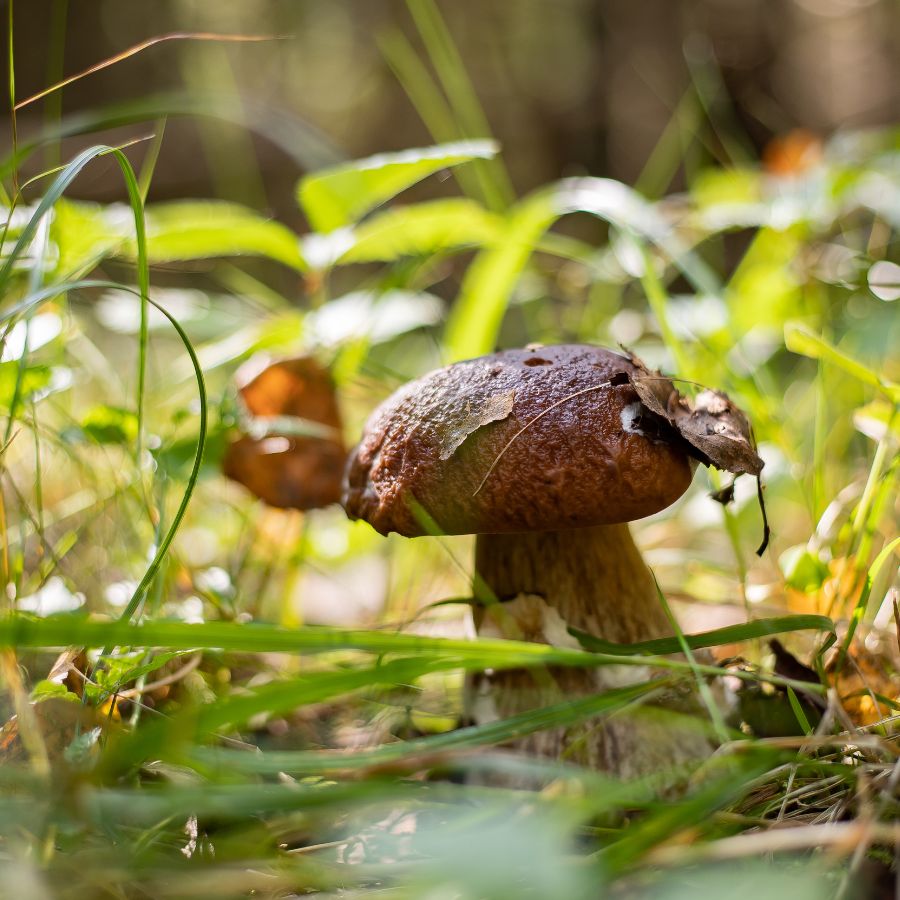
Porcini mushrooms are one of the most sought-after wild edibles in North America. Their meaty texture and rich, nutty flavor make them a favorite among foragers and chefs alike. Knowing when they appear is key if you want to find them in good condition and before the bugs do.
In most western states, porcini season usually runs from late summer into fall. You can start checking in July at higher elevations and continue through September or October depending on the region. In places like the Pacific Northwest and the Rocky Mountains, the timing often lines up with the first good rains after a dry spell.
In the eastern US, porcini mushrooms tend to fruit earlier. They often show up between late spring and mid-summer, especially in hardwood forests with oak or beech. A warm, wet stretch of weather can bring them up quickly, sometimes just days after a heavy rain.
Some parts of the country even have a second flush in the fall. Areas with mixed forests and a long growing season may see porcini pop up again in September or October. Local timing varies a lot, so it helps to learn what to expect in your state and watch the weather closely.
One Final Disclaimer
The information provided in this article is for general informational and educational purposes only. Foraging for wild plants and mushrooms involves inherent risks. Some wild plants and mushrooms are toxic and can be easily mistaken for edible varieties.
Before ingesting anything, it should be identified with 100% certainty as edible by someone qualified and experienced in mushroom and plant identification, such as a professional mycologist or an expert forager. Misidentification can lead to serious illness or death.
All mushrooms and plants have the potential to cause severe adverse reactions in certain individuals, even death. If you are consuming foraged items, it is crucial to cook them thoroughly and properly and only eat a small portion to test for personal tolerance. Some people may have allergies or sensitivities to specific mushrooms and plants, even if they are considered safe for others.
Foraged items should always be fully cooked with proper instructions to ensure they are safe to eat. Many wild mushrooms and plants contain toxins and compounds that can be harmful if ingested.

